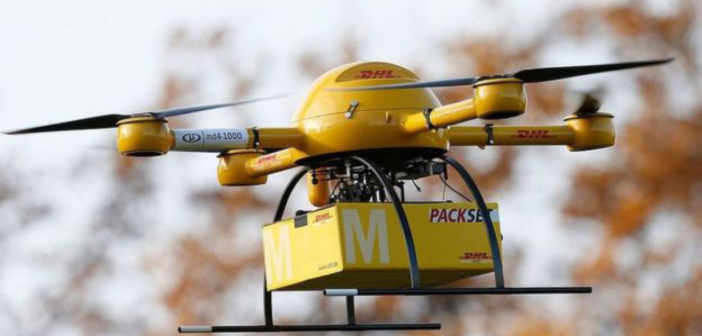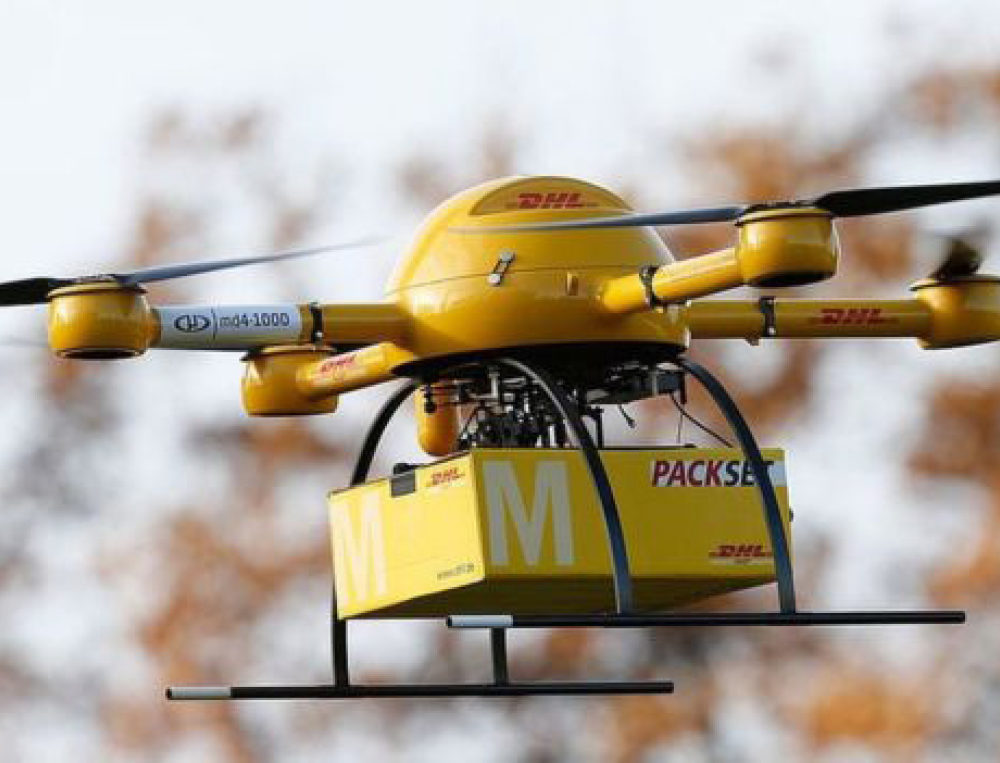By Rafal Matuszczak
On Oct. 6, Verizon announced that the company began testing drones as a mobile service delivery system that would serve as a secondary way of connection during emergency situations. Projects that involve the use of drones have already been launched in the past by other companies. These companies demonstrated that drones which were initially invented for military purposes, similarly to computers, might benefit the whole society by a variety of services that they can provide.
The CIA has been using unarmed drones since 2000. During that time, the machines were flying over Afghanistan. However, after the attacks that happened in New York on Sept. 11, 2001, CIA began to use armed drones. Using such machines would give the US army an advantage of being able to attack a target without risking the life of its soldiers as all the attacks could be performed remotely.
On Feb. 4, 2002, for the first time a drone named “Predator” was used by CIA to attack a target remotely. According to the CIA, the drone was supposed to strike the place in which a terrorists’ leader, Osama bin Laden, was hiding, according to thenation.com Even though the mission was not successful, because it turned out that bin Laden was not present in the place of attack, it started a new chapter in the history.
Since then, drones have been associated with machines that carry missiles, and their primary purpose is to attack distant targets, with the main purpose to kill people. Nevertheless, the most recent history of drones presents that even though they started as machines that take people’s lives away, drones can become devices that can be utilized to save people’s lives by helping those in emergency situations, in particular.
Today, not only do drones serve as tools for recording videos and taking pictures from the bird’s view, but they also help people overcome problems that few years ago could not be avoided. The trials held by Verizon in Cape May, NJ only prove that the sky is the limit if it comes to the ways in which drones might be used to benefit the society.
For Verizon, the drones would serve as emergency LTE-based antennas that could deliver temporary service in areas where the terrestrial cell towers cannot be used. Such a solution would be useful for incidents dealing with a natural disaster when the communication is one of the most important aspects in regards to saving people’s life.
“This latest trial demonstrated how emerging technology combined with wireless networks can improve safety and security,” said Mike Haberman, vice president of Network Operations at Verizon, according to foxnews.com.
The flying antennas could also be useful in situations when the primary network is overwhelmed with a number of users trying to connect. For example, the drones could improve the service for the customers by providing additional access points. Drones are supposed to replace portable mobile cell towers that are used in such situations.
The project launched by Verizon is not the only one that is currently on the market. In fact, on this field, Verizon is just the competitor to another large network and mobile services company, AT&T. The company has also been testing drones for the same purposes. Additionally, AT&T plans on using them to inspect the already existing cell towers.
Inspecting the cell towers from the bird’s eye view with the use of drones could greatly speed up the process as other machinery would not be necessary.
“By using drones to inspect a cell site, we’re able to conduct inspections more quickly and safely – and even access parts of a tower that a human simply could not.We anticipate this will allow us to improve our customers’ experience by enhancing our cell sites faster than ever before,” said, John Donovan, Chief Strategy Officer, and Group President – AT&T Technology and Operations, according to about.att.com.
The company is researching how using drones could enhance the LTE network by sending large amounts of data in real time. AT&T indicates that if the project is successful and the solution works, drones might benefit many areas, such as facility and asset inspections or even farming.
Even though both Verizon and AT&T plan to use drones primarily in emergency situations, there are other companies that have much higher expectations in regards to the use of these machines. They do not only want the drones to fly for several hours when they are needed, but they expect them to fly for weeks or even months without being interrupted.
One of the companies that has such big aspirations is Facebook. On Jul. 21, 2016, Facebooks’ team of engineers along with the company’s founder, Mark Zuckerberg, met in Yuma, AZ to test their newest invention, a solar-powered drone: “Aquila”, according to theverge.com
For the company, the drone’s main purpose is to deliver Internet connection to remote places that cannot be connected with a use of different technology. Even though Facebook is mostly known for running its social platform, the company has recently become highly involved in the project of making the world connected and drones are where the company sees the biggest potential to make it happen.
Theverge.com reports that Aquila is Facebook’s invention of which wingspan is greater that a Boeing 737’s. The 140 feet wide machine made of carbon fiber is designed in such way that it can stay in the air for three months in order to deliver high-speed internet connectivity. The signal is accessible within the range of 100 kilometers.
Delivering the internet to remote populations by using drones is supposed to be cheaper than other technologies. The drones do not require a lot of interaction with people as they use solar power and fly at more than 60,000 feet in altitude until their batteries have to be replaced eventually.
The batteries that the machines are equipped with allow them to stay in the air even when there is not enough solar power to let the engines work. The batteries capacity remains one the most important issue for the engineers. It is crucial for the machines to store enough energy, because only this way the project can be successful as the machines will not require constant interaction with people and they will be able to work independently.
Facebook announced that there are still many tests to be done before Aquila will be produced on a large scale. So far, the drone did not even reach the eventual altitude at which it will fly, according to Facebook. During the test, the machine reached the altitude of 2000 feet, and the flight lasted 96 minutes, which was an hour longer than what the company had eventually planned.
Nevertheless, the test was very important as it was Facebook’s huge step towards making the Internet accessible for people who are not connected yet. Allowing the people to be connected will most likely result in an increase in the popularity of Facebook. However, even though some people might think the development of the drones is just a marketing strategy with the purpose of increasing the amount of accounts on Facebook, this invention will truly help many enclosed communities to get access to the outside world.
There are about 4 billion people who exist without the internet, and about 1.6 billion of them reside in places where it would be very hard to create the connectivity, according to Forbes. If the project ran by Facebook turns out to be successful, people will get better access to educational resources, important information will be delivered to them faster than ever before, and they will be able to connect with the world so that more opportunities will become available for them.
“You know, if you told me when I was getting started with Facebook that one day we would build planes, I would’ve told you that you were crazy. But this is now an important thing for us to do to fulfill this mission of connecting everyone in the world. We’re bringing our ‘move fast’ culture to this problem, and I’m really impressed with our team’s work. We’re not a plane company, but within a little more than two years of having this idea and starting to build the team, we now have a plane which has flown for an hour and a half. [It’s] just a really big milestone on this path to connecting everyone,” said Zuckerberg in an interview for theverge.com
Even though it might already seem very impressive to use drones for connecting the world, it is very probable that there is much more to come. The machines have been already tested by many other companies to provide people with new services or to improve the ones already existing.
Companies, such as Amazon or UPS, plan to use drones to deliver packages. While Amazon is creating a whole new branch of their business named Amazon Prime Air that will be used for delivering packages to people’s houses, UPS plans to use drones to deliver medical supplies in emergency situations.
There are many more companies on the market that are currently experimenting with the machines; and if the massive companies, such as those mentioned before, are so close to starting using drones on a daily basis, it is possible that many smaller companies will follow. Thus, drones instead of being associated with carrying weapons might soon be perceived as machines bringing help, services, and convenience for people around the world.






